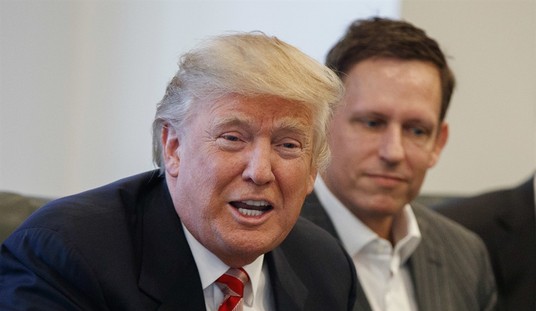Donald Trump may not go far in this campaign but his effect is going to be profound. While many of the GOP candidates have offered various proposals (check out the reference list), Trump, today, became one of the few candidates to release a detailed proposal. The proposal is notable for a few things. It reduces taxes on the middle class, it is reform-based rather that tax-cut based, and it has been scored by the American for Tax Reform as both revenue neutral and in compliance with the ATR’s Taxpayer Protection Pledge:
GOP Presidential candidate Donald Trump released details of his tax reform plan today. It features a system with much lower tax rates than current law, and a broadened tax base for high income earners.
“Trump’s plan is certainly consistent with the Taxpayer Protection Pledge,” said Grover Norquist, president of Americans for Tax Reform. “Trump has said he opposes net tax hikes and has made clear that the real problem is spending. This plan is a reform, not a tax hike.”
…
The most disappointing part of the Trump plan is that the tax system would move no closer to full expensing of business fixed investment. Businesses would still be saddled with the complex, distorting, and growth-inhibiting “depreciation” regime where an asset is deducted over several or even many years. Far better would be to move to a full-expensing business cash flow model, where all business inputs including investments are deducted in the year spent. While this is somewhat ameliorated by the far lower tax rates, a lack of progress here is the plan’s biggest drawback.
Highlights:
- Four tax brackets topping out at 25%
- Business tax cut from 35% (or 39.6% depending on the business type) to 15%
- Capital gains cut from 23.8% to 20%
- No death tax
- No AMT
- No marriage penalty
The Wall Street Journal gives it a solid review:
Under the Trump plan, no federal income tax would be levied against individuals earning less than $25,000 and married couples earning less than $50,000. The Trump campaign estimates that would reduce taxes to zero for 31 million households that currently pay at least some income tax. The highest individual income-tax rate would be 25%, compared with the current 39.6% rate.
Many middle-income households would have a lower tax rate under Mr. Trump’s proposal, but because high-income households generally pay income tax at much higher rates, his proposed across-the-board rate cut could have a positive impact on them, too. For example, an analysis of Jeb Bush’s plan—taxing individuals’ incomes at no more than 28%—by the business-backed Tax Foundation found that the biggest percentage winners in after-tax income would be the top 1% of earners.
…
For businesses, Mr. Trump’s 15% rate is among the lowest that have been proposed so far.[mc_name name=’Sen. Rand Paul (R-KY)’ chamber=’senate’ mcid=’P000603′ ] has proposed a 14.5% flat-tax rate for all types of income. [mc_name name=’Sen. Marco Rubio (R-FL)’ chamber=’senate’ mcid=’R000595′ ],another candidate with a detailed plan, would tax all business income at no more than 25%. Mr. Bush has proposed a 20% top corporate rate. The current top corporate tax rate is 35%, and small business income is subject to rates of as much as 39.6% (although many small businesses pay out a lot of their profits as lower-taxed dividends or capital gains). The campaign argues the rate would be among the lowest among industrialized nations, giving U.S. companies an edge to compete.
Trump’s proposal is a great first step in bringing rationality to the US tax code and focusing it on creating wealth and jobs rather than making it a piggy bank for special interests. It serves the needs of the America middle class and it should serve as a point of departure for other candidates who are still struggling to decide what they believe the tax code should look like.














Join the conversation as a VIP Member